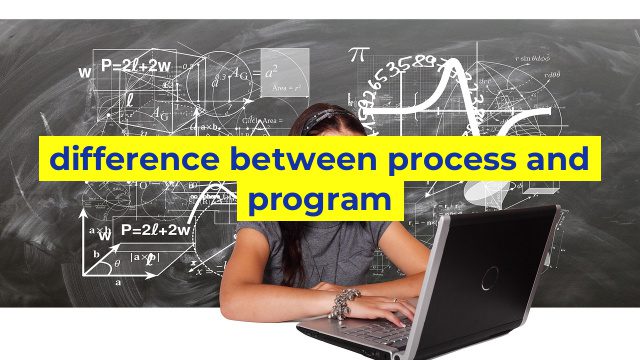The Difference Between Process and Program in Computing
When it comes to computing, you may have come across the terms “process” and “program.” While these words may seem interchangeable or used in the same context, they are actually different concepts that are important to understand in the world of software development and programming. In this article, we will explore the differences between process and program.
What is a Program?
A program is a set of instructions or code written in a programming language that is executed by a computer. Simply put, it is a software application that performs a specific task or set of tasks such as word processing, browsing the internet or playing games. A program is usually stored on a computer’s disk or hard drive and can be installed or removed by a user.
Programs are designed to be reusable, meaning they can be used whenever needed to perform a particular task. Once a program is installed on a computer, it can be started by running its executable file, which loads the program into the computer’s memory and initiates its execution.
What is a Process?
A process, on the other hand, is an instance or occurrence of a program running on a computer. It is a dynamic entity that executes in the computer’s memory and has its own state, which includes the values of the program’s variables, stack, heap, and other memory-related information.
Processes allow concurrent execution, which means that multiple instances of a program can run simultaneously, each with its own memory space and execution state. This can help improve the overall performance of an application, particularly in a multi-user or multitasking environment.
Processes are usually managed by the operating system, which provides resources such as memory and CPU time and ensures that each process has a fair share of the available resources.
The Key Differences Between Process and Program
The key differences between process and program are as follows:
- A program is a set of instructions that performs a specific task, while a process is an instance of a program running in memory.
- A program is static and reusable, while a process is dynamic and ephemeral.
- A program can be installed and removed from a computer, while a process is started and stopped by the operating system.
- A program can have multiple instances running simultaneously, each represented by a unique process in memory.
- A program creates a process when it is loaded into memory and executed, and that process terminates when the program execution is complete.
Conclusion
In summary, while the terms process and program are often used interchangeably in computing, they are distinct concepts with different meanings. A program is a set of instructions that performs a specific task, while a process is an instance of a program running in memory. Understanding the differences between these two concepts is essential for software developers and others who work in IT, as it helps them design and implement applications more effectively.
Table difference between process and program
| Process | Program |
|---|---|
| A process is an instance of a program in execution. | A program is a set of instructions that are written in a programming language. |
| It has its own memory space and execution state. | It is a static entity and does not have its own memory space or execution state. |
| A process may comprise multiple threads of execution. | A program may be comprised of multiple functions, modules, or libraries. |
| A process has a unique process ID (PID). | A program does not have a process ID. |
| Processes can communicate with each other through inter-process communication (IPC). | Programs may communicate with each other through other mechanisms such as APIs, libraries, or sockets. |

